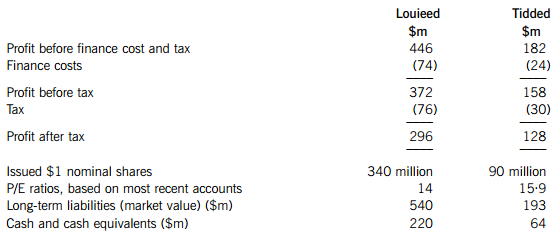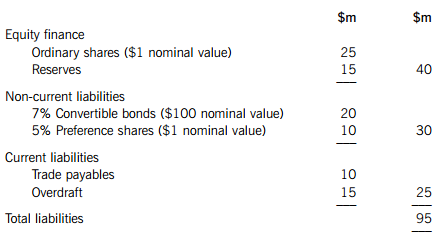Rocket Renaissance The Ear of Private Spaceflight Is About to Start BackgroundTwo years ag
Rocket Renaissance
The Ear of Private Spaceflight Is About to Start
Background
Two years ago, people witnessed the first space travel by SpaceShip One. Three people were involved in this flight: Burt Rutan, who designed the craft, and Mike Melvill, who flew it--although they were ably assisted by Paul Allen, one of the founders of Microsoft, who paid for it. Certainly, people have long been known that manned spaceflight was possible. What they showed was that it is not just a game for governments. Private individuals can play, too.
People involved
Now, lots of people want to join in, and most of them have just met up at the International Space Development Conference in Los Angeles, to engage in that mixture of camaraderie and competition that characterises the beginnings of a new technology. And, as might be expected, they have two of the necessary ingredients of success: ideas and money.
First, the money. So far, more than $1 billion is known to have been committed to building private spaceships and the infrastructure to support them. For example, Mr.. Rum&39; s follow-up vehicle, SpaceShip Two, is expected to cost its backers, Virgin Galactic, $240m for a fleet of five. The spaceport in New Mexico from which these are intended to fly will account for another $225m, although New Mexico&39;s government is planning to raise this money itself.
These are not small sums, of course. On the other hand, Virgin Galactic has already banked $14m of deposits towards the $200,000 fare from people who want to travel on SpaceShip Two, even though it has yet to be built, let alone flown.
All this suggests that spaceflight, if not exactly entering the age of the common man, is at least entering the age of the moderately prosperous enthusiast. For entrepreneurs, it is no longer necessary to have billions of dollars to get into space; millions will now do. And for those who merely wish to travel there, and have enough money in their bank account, reality is favourable.
Get started
As with aircraft a century ago, a lot of designs are competing with each other, and there is no certainty about which will succeed. The initial goal is to build a "suborbital" vehicle. This will not have to develop the tremendous speed needed to go into orbit around the Earth. instead, it will travel briefly into space, offering a short thrilling ride out of the atmosphere, a few minutes of weightlessness, and a spectacular view of the planet from about 100kin. Four important criteria are how you take off, what fuel you use, what your craft is made of, and how you come back.
Most people&39;s vision of a rocket launch is straight up from the ground. But, of the five vehicles most likely to be developed, two will actually be launched from the air. SpaceShip Two will be carded to high altitude by a purpose-built aircraft known as Eve before its rocket motor is ignited. And Explorer, a vehicle being designed by Space Adventures, will be launched from the top of a high-altitude Russian research plane called the M-55X, according to Eric Anderson, the firm&39;s president and chief executive.
As Dennis Jenkins, a consultant engineer at NASA, America&39;s space agency, points out, this is similar to using a two-stage rocket to get into space, with the aircraft acting as the first stage. However, a plane offers several advantages over a throw-away booster rocket. First, it can be used again. Second, it uses oxygen from the air, rather than having to carry its own oxidant, which saves weight. Third, it is lifted by wings. That means the atmosphere is an advantage, rather than a hindrance. All this means that the spacecraft itself can be lighter and cheaper.
Not everyone wants to run two vehicles, though. Jeff Greason, president of XCOR Aerospace, a firm based in Mojave, California, is developing a two-person, ground-launched suborbital rocketplane called Xerus. Launching from the ground, says Mr. Greason, is more difficult than air launching, but he reckons that in this case it has significantly lower operating costs.
Fuel choices
The second important design choice is the type of fuel. Unlike a jet engine, a rocket carries its own oxidant (氧第剂). This is why it can operate in space. Sometimes that oxidant is oxygen itself, in liquid form. In that case the fuel, too, is usually liquid-either kerosene (煤油) or liquid hydrogen (氢) —and the two liquids are stored in separate tanks until they meet in the rocket&39;s combustion chamber. Alternatively, both fuel and oxidant are solid, and are loaded pre-mixed, like the propellant of a firework rocket.
SpaceShip Two, though, follows the design of SpaceShip One and is powered by a mixture of the two. The combustion chamber of a mixture is partly filled with solid fuel but no oxidant. However, the fuel is coated round the inside of the chamber, leaving a hole through the middle into which a liquid or gaseous oxidant can be pumped, and out of which the exhaust emerges. In SpaceShip One, the fuel was rubber and the oxidant a liquefied gas called nitrous oxide (一氧化二氮).
Proponents of mixture say they are safer than either pure solid or pure liquid rockets. George Whittinghill, Virgin Galactic&39;s chief technologist, says that they are safer than solid rockets because the flow of oxidant can be controlled, and combustion halted, if there is a problem. Solid rockets, like the fireworks they resemble, cannot be stopped until they run out of fuel. On the other hand liquid-fuelled engines, though they can be shut down, are complex and temperamental. As Mr. Whittinghill observes, "they have pumps, seals, valves and lines everywhere, and there is a lot that potentially could go wrong."
All this rather irrates those working on liquid propulsion. Richard Pournelle, head of investor relations at XCOR Aerospace, says the comparison is unfair. Liquid propulsion is routine in rocketry while hybrids are still rare. Numbers alone, therefore, mean that liquid-fuelled rockets blow up more often. That, Mr. Pournelle argues, does not prove that they are inherently unsafe. Chuck Lauer, vice- president of business development for Rocketplane, another firm going down the liquid-fuelled route, agrees and argues that kerosene is widely used as aviation fuel and nobody complains that it is unsafe.
1. It is only two years ago that people became aware of the fact that manned spaceflight was actually possible.
A.Y
B.N
C.NG
Spaceflight is possible for individuals who want to fly in the space and who have the money.
A.Y
B.N
C.NG
The initial goal of building an aircraft is to make the vehicle fly, and speed was not such a primary consideration.
A.Y
B.N
C.NG
All of the five vehicles most likely to be developed will be launched from the air.
A.Y
B.N
C.NG
Although it is possible to launch the spaceship both from ground and from the air, some people believe it&39;s more cost-effective to launch it from ground.
A.Y
B.N
C.NG
A consultant engineer at NASA points out that using aircraft acting as the first Stage provides several advantages over a throw-away booster rocket.
A.Y
B.N
C.NG
In the design considerations of a spaceship, fuel choice is as important as the method of launching.
A.Y
B.N
C.NG
A rocket carries its own oxidant, and its fuel is usually either kerosene or______.
Proponents of mixture say that they are______than either pure solid or pure liquid rockets.
Proponents of kerosene cite the example of______using it as fuel
请帮忙给出每个问题的正确答案和分析,谢谢!
 题目内容
(请给出正确答案)
题目内容
(请给出正确答案)
 答案
答案



























